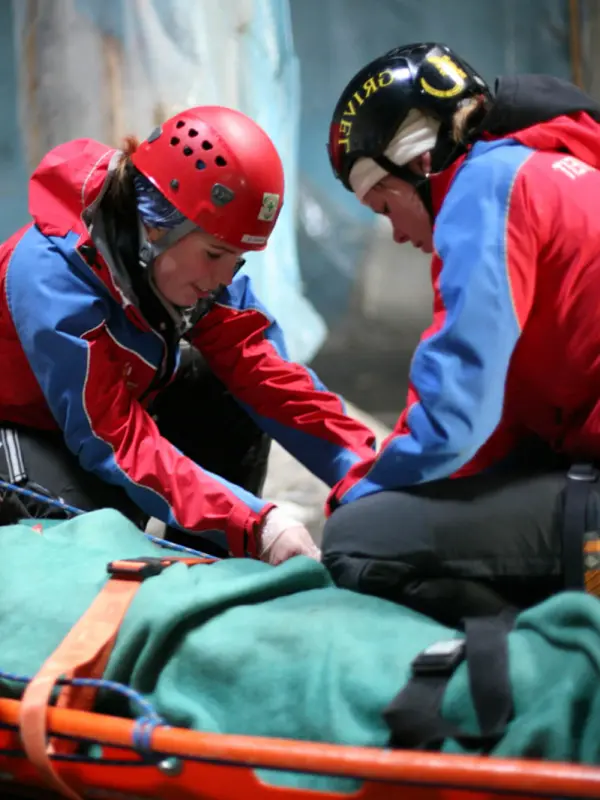Instructor Spotlight
Meet Megan LaPierre
Megan LaPierre is a talented outdoor professional, an empath and patient caregiver by nature, a mother of a 10-year-old and a 12-year-old, and a resident of the New York’s Adirondack Park. Most of her free time is spent parenting and venturing into the surrounding beauty to hike, ski, paddle, and swim with her husband, children, and two German Shepherds.
Megan is currently working as Lieutenant for the New York State Forest Rangers in the Adirondack Park. Since becoming a Ranger in 2007, Megan’s position places her in a variety of different roles that can change by the day or even by the hour. As a Ranger, Megan is in charge of search and rescue operations, wildland fire response, incident command incidents and large events, and state land patrol. Rangers are also Police Officers and often send out crews to respond to natural disasters or wildland fires.
Megan’s journey into this career began when she was part of a group in high school called “Wilderness Wise,” that took its final exam in the Adirondacks. She then began guiding groups in the Adirondacks while pursuing a dual major in Aquatic Environmental Science and Chemistry from the State University of New York (SUNY) College at Brockport. While guiding during her sophomore year, she was present for a big storm where a patient had to be extricated and taken to the hospital. Megan watched how the Rangers handled that situation, and from that moment she decided that she was going to join their ranks. While awaiting her chance to pursue this goal, Megan earned a master’s degree from SUNY College of Environmental Science and Forestry in Syracuse in Water and Wetland Policy and Law before moving to Albany, New York to run the Department of Environmental Conservation’s (DEC) environmental camps. Eventually, Megan took the Forest Ranger exam and entered the DEC’s Forest Ranger Academy. Megan has had a long career in the field, and recently accepted the new challenges that come with the role of Lieutenant.
Megan’s first brush with WMA International occurred during her initial Forest Ranger training since a WFR certification is part of the curriculum. Three years into being a Ranger, and just one year after becoming an EMT, Megan realized that she gravitated towards patient care. Wanting to share this passion with others, she became an instructor for WMA. Megan’s experience – whether it be navigating a 14-hour carry out off of Mt. Marcy for a broken pelvis and femur during a blizzard, or fighting a 3,000-acre fire that was jumping dozer lines that were 400 ft. across – gives her hundreds of personal examples to share with her students and bring the lessons to life.
WMA: What are some key attributes of a wilderness medical professional?
Megan: A big one is self-awareness. You need to have a handle on yourself and your capabilities, your emotional and physical well-being, and an awareness of what you are able to handle at this moment. You also need to be willing to learn and recognize what you don’t know, and not be afraid to ask. I have taught other Rangers skills in front of a patient, and by explaining what I am doing it calms the other Ranger down and it calms the patient down. The more information we have as humans, the better we are at handling things.
WMA: Do you ever hear back from your students?
Megan: I’ve been teaching a lot of classes out of Adirondack Lodge recently, which is one of the biggest trailheads in the state. Most of the people who take these classes hike locally. Because of this, I have had multiple rescues where my WFR students are on the rescues. It’s amazing because it really comes full circle. As I’m responding to a rescue I’ll be on the phone with one of my WFR students who is doing patient care as I’m coming in as a Ranger. I get there and they hand me a full SOAP note, splints are perfect, they’re well-packaged . . . and it almost makes me want to cry. As instructors, we have the ability to affect lives every day, through our students, even when we’re not there!

